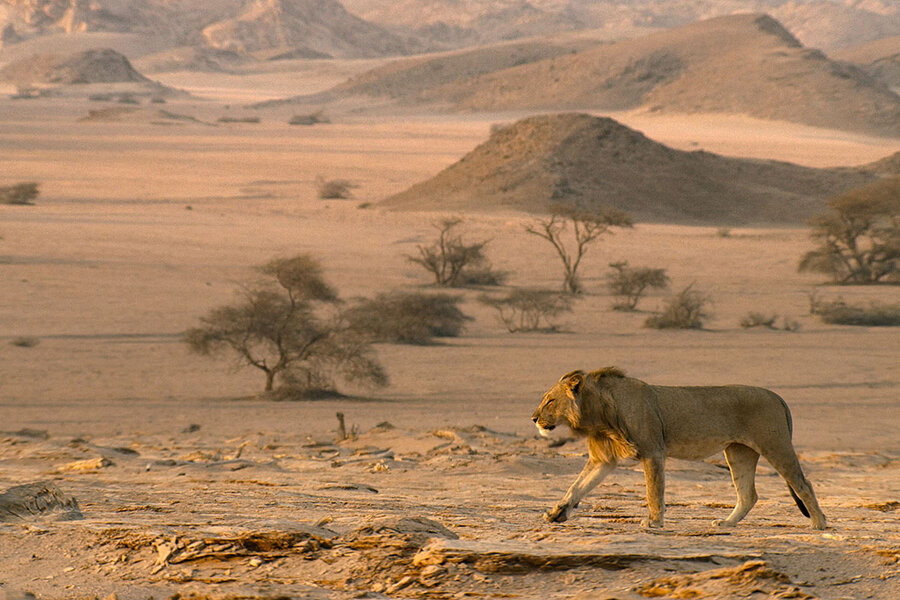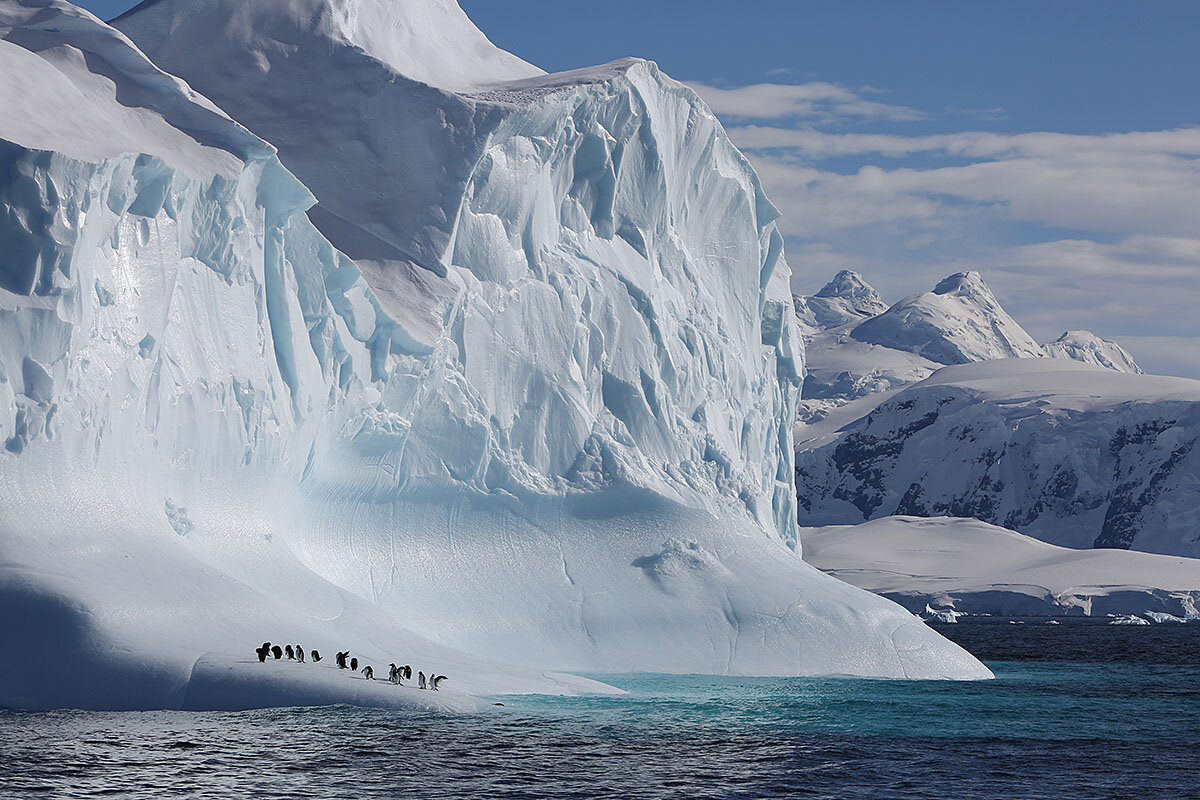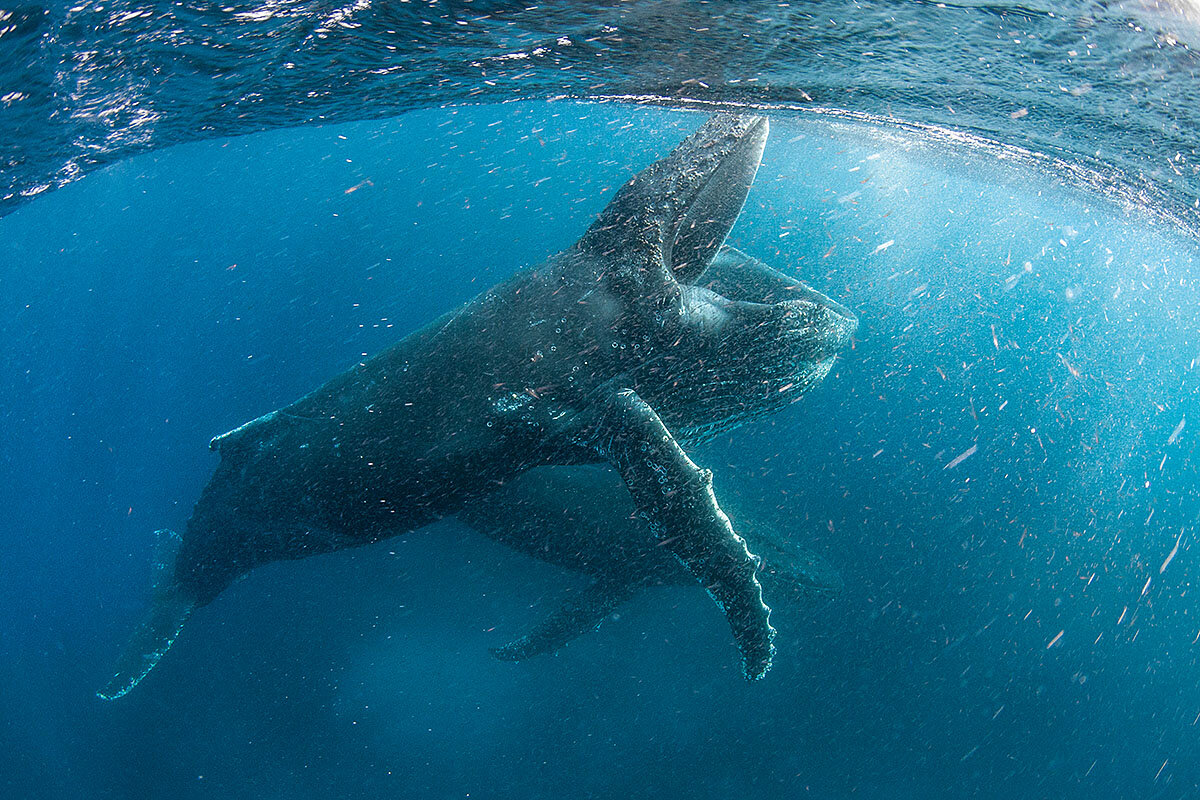‘Our Planet’ is beautiful. But can it change minds?
Loading...
Colorful reefs, a tiger stalking through the grass, and David Attenborough’s soothing voice: The opening scenes of the new documentary “Our Planet,” which begins airing on Netflix Friday, feel very familiar.
But the message accompanying those opening shots isn’t about the visual splendor on screen.
“For generations, this stable Eden nurtured our growing civilizations,” narrates Mr. Attenborough. “But now, in the space of just one human lifetime, all that has changed. In the last 50 years, wildlife populations have on average declined by 60%. For the first time in human history, the stability of nature can no longer be taken for granted.”
Why We Wrote This
Traditionally, nature shows offer a soothing escape into the beauty of the natural world. But with ‘Our Planet,’ the creators aim to bring new layers of honesty and environmental responsibility to the genre.
There’s been a certain divide in the past between nature shows that are primarily about delighting viewers with the wonders of the animal kingdom, and documentaries with a more activist agenda. The “Our Planet” creators are hoping to bridge those two worlds – and some environmentalists and documentary producers are hoping that the days of pure natural beauty, divorced from the context of the threats to those ecosystems, are ending.
“I’ve had a deep problem for decades with the eye-candy version of nature imagery,” says James Balog, a photographer whose work has focused on the relationship between humans and nature. “It’s created this happy romantic fiction that there’s this wonderful Eden where everything is beautiful and everybody is frolicking around doing what they do in the nonhuman world of nature. ... The situation is dire, and the need is urgent for eyes wide open and all hands on deck.”
The “Our Planet” creators try to straddle that divide.
“We were determined that this time it had to be a series about our time. And we’re seeing the degradation of nature really accelerating in the last 10 years,” says Keith Scholey, who co-produced the series with Alastair Fothergill (both are Silverback directors). “The series – I hope people will love it,” he says. “But it’s not all entertainment. It has a reason to be there.”
There is still plenty of jaw-dropping imagery, from humpback whales bubble-net feeding to flamingos flocking to a desolate salt pan after a rain. But those shots are couched in a narrative that underscores just how much humans are destroying the Earth.
A riveting orangutan sequence ends with the note that this could be the last generation of wild orangutans as their jungle habitat disappears. And a devastating scene of more than 100,000 walruses hauled up on a single beach, overcrowded due to lack of sea ice, shows walruses plunging to their death from cliffs that they should never have had to scale.
A sequence like the courtship ritual of a bird of paradise has “got that absolute pure wonder,” says Colin Butfield, the conservation adviser to “Our Planet” from the World Wildlife Fund. But it also “brings home the fact that each patch of tropical forest contains wonders in many cases that are seen nowhere else, so the loss of that particular area has importance,” he adds.
From the beginning, Mr. Butfield notes, the “Our Planet” creators aimed to discuss threats to the natural world in a more overt way than previous large-scale productions have. They hope that they can appeal to a broad audience by balancing discomfort and outrage with hope and beauty.
That shift has been happening for some time, says Lisa Samford, executive director of Jackson Hole WILD, which sponsors a yearly wildlife film festival. “It’s no longer enough to entertain and inform,” Ms. Samford says. “At the very least, media really has to serve as the connective tissue between viewers and the world around them. That’s what consumers are demanding.”
Of course, there are still plenty of questions about just how much change such productions do inspire. Mr. Butfield says he hopes the show elevates the importance of biodiversity, climate change, and sustainability just as the United Nations is getting ready to revisit big international goals for all three topics in 2020.
Louie Psihoyos, who made “Racing Extinction” and the Oscar-winning documentary “The Cove,” about dolphin-hunting practices in Japan, notes that storytelling is very often the most effective way to drive change. In his films, he focuses on narrative arc that first engages viewers, then outrages them, then shows them a path forward and gives cause for hope and reason to change.
“You can keep on chasing these smaller and smaller oases of true wild nature and give the illusion that everything is wonderful and Disneyland,” says Mr. Psihoyos. “But the truth is, it’s disappearing. Unless you address that, you’re doing a great disservice to the things you’re trying to protect.”









